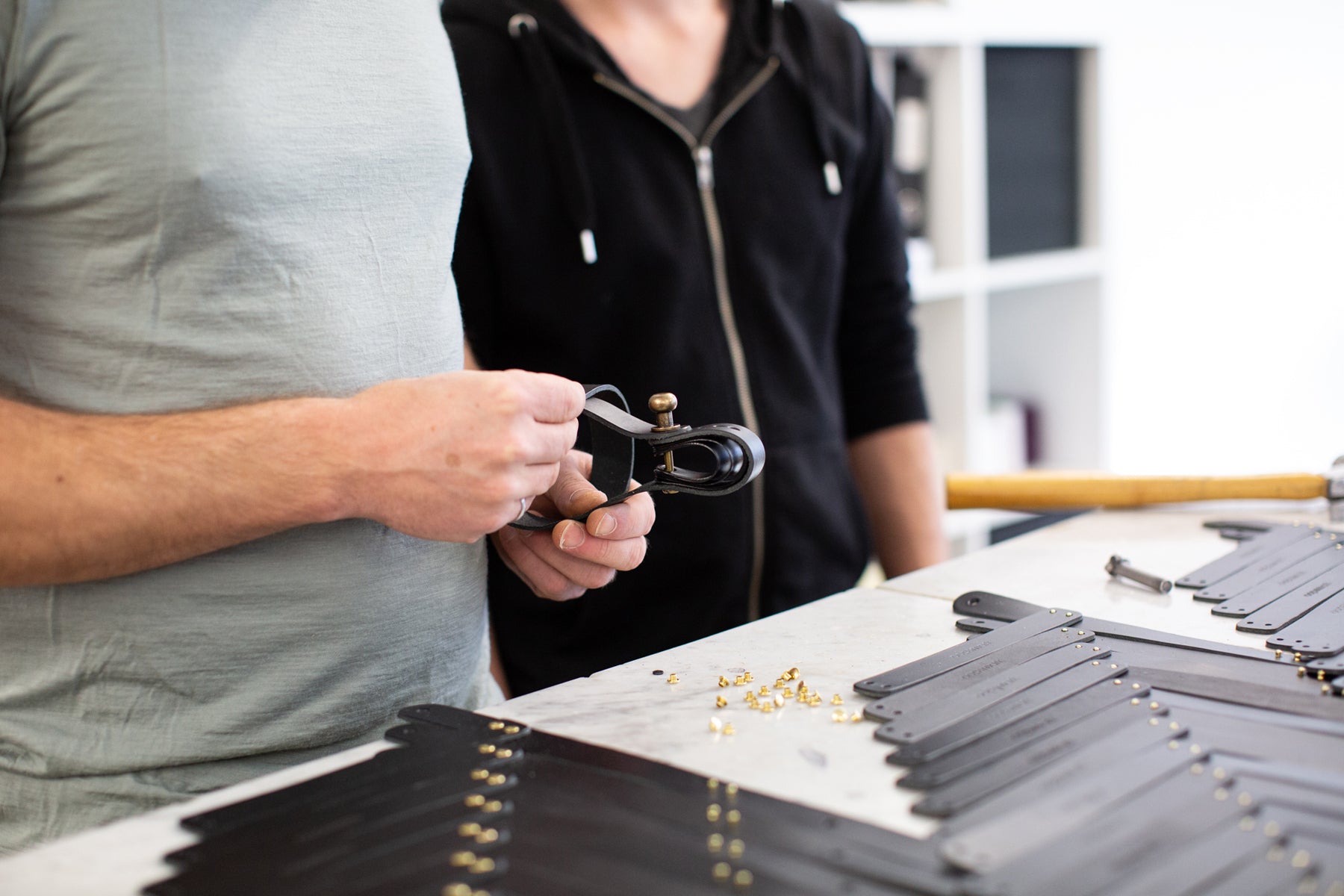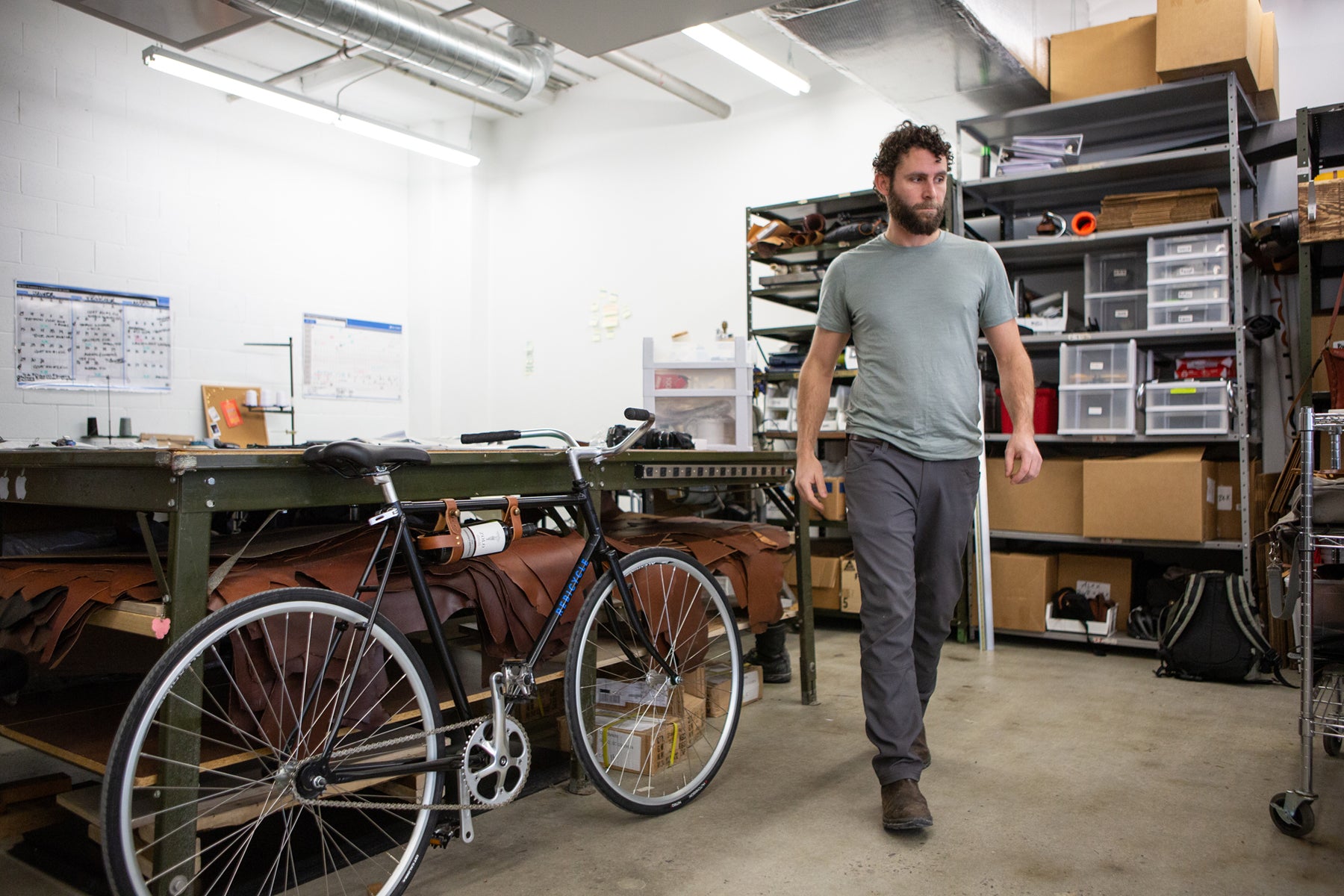Jesse Herbert was in his early 30s when he left his job as an environmental engineer working with the federal government. He had a stable career but wanted more flexibility to travel and spend time with friends and family. Since childhood, he’s loved making things, and when he resigned from his day job, he turned that hobby into his livelihood.
Jesse launched Oopsmark in 2010, and one of his first designs—a handmade leather wine bottle carrier that straps to a bicycle—was an instant hit, appearing in magazines like Playboy and Wired. As Oopsmark became more successful, Jesse put as much time and energy into his workshop as he did his products. His large studio space had work tables and room for his tools, of course, but also a kitchen, lounge, hydroponic plant system, a workout area, and an expansive view of Montreal’s Mile End neighborhood. It embodied the style and functionality that made Oopsmark’s products so popular. And, it was everything that cubicle life wasn’t.

But the studio also became a trap. When Jesse began to feel burdened with the responsibility of maintaining a large, expensive space, he and his small team spent a few hectic months making several years’ worth of inventory. He then gave up his lease, downsized to a much smaller space, outsourced his product shipping, and took off on a four-month European cycling trip. Jesse explains, in our edited chat, how he made it happen and what he learned about running his company from a bicycle.
Cal Cook: Was it hard to give up such a great studio?
Jesse Herbert: Sometimes you get carried away with building stuff without thinking about whether you should be building it or not. The joy for me, really, is in the building part. So I was like, “I can let go of this.” It was not going to provide me with freedom. Downsizing the studio was amazing because rent is where you spend most of your money. The goal for me is not to have a space at all, almost. I’ll have to, because I’m a maker, and I always want to fiddle with things, but now I want the smallest space possible so it’s not a burden.
Cal: How much time did you actually spend working during your cycling trip?
Jesse: Sitting on my phone working or on my computer working, not that much time. It’s down to a bare minimum. On this last cycling trip through Argentina, I barely used my laptop. It got me thinking, the goal should be using only a phone. But finding electricity is a problem when biking!
Cal: How have you set up the business to make it mobile?
Jesse: Manufacturing all the time is just a distraction, so we focused a bunch of time on manufacturing and got that out of the way. And we outsourced shipping and fulfillment to another company. We ship our inventory to them—we don’t even store inventory—and they download my orders from my websites and ship the stuff.

Cal: So what’s left for you to focus on?
Jesse: Really, just content production, marketing, and account management. And what is work? A lot of the time, [while] biking, I’m thinking about things being done this way or that way.
Cal: What have you learned about being your own boss?
Jesse: One thing I realized was, OK, I can design whatever I want. I can make this however I want to make it. If I’m the boss, how’s the job going to be? For me, it was about creating a better quality of life to spend time with the people I want to spend time with, and basically to create time. That’s the most valuable thing.
Words by Cal Cook
Photographs by Richmond Lam
Header photo courtesy of Oopsmark
